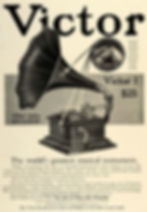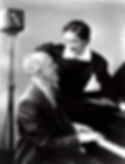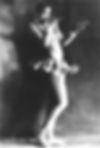The golden age of the Cotton Club
- Margareth
- May 17, 2020
- 5 min read
Let's talk about the most popular Speakeasy Club in New York City during Prohibition era

It’s with "The Best" of Duke Ellington in the background that I am writing this post. I find it so inspiring as it seems to get me back in time ... in those times that I had not experienced of course, as I am talking about the Roaring Twenties. Duke's mesmerizing arrangement of "Limehouse Blues" is one of my favourite and one of the most renowned masterpiece of Jazz music as it remains in its standard repertory.
The period from the end of the First World War until the start of the Great Depression in 1929 is known as the "Jazz Age". Since 1920, jazz music has become recognized as a major form of musical expression, "one of America's original art forms". The Jazz scene was developing rapidly throughout the United States, though older people considered it immoral. Dances such as the Charleston and the Black Bottom were very popular during that golden age and dancers used to feed their souls to the tune of live performances by jazz bands, typically consisting of seven to twelve musicians. However, this kind of music would not probably gain such popularity and recognition around the globe during the 1920s without the crowded clubs that housed bands playing this musical genre.
Night-clubs became very crowded, representing the music and spirit of the time and being the favourite hangout of celebrities and personalities of the Roaring Twenties. Jazz Bands spread like wildfire as they ride the wave of this new trend and, since these bands were merely composed by black people, they seize the opportunity to redeem themselves from discrimination and whatever form of racism. However, before musicians could reach the grand uptown theaters or the big festival stages, they had to first make it in the clubs.
King Oliver’s Creole Jazz Band

The New Orleans Rhythm Kings


Call it Jazz Age, the Roaring Twenties or Les Annés Folles … it was the era of progress and economic prosperity. The age of industry development, fast cars, luxury, Art Deco. The years of the Flappers belonging to a lost generation without morals, the age of a crazy finance that led to the 1929 crash … The decade of 1920s marked huge advances in the music industry. It developed pretty fast thanks to the phonograph music records that everybody sitting on their sofas could now listen to. Every band around wished to see their new “hit” on top of charts. Beginning of 1920s, indie record labels like Gennett Records from Indiana and Chicago Paramount were in competition to record best jazz groups of the time. End of 1920s the radio would become the most important medium in the music industry and entertainment, becoming less expensive time after time.
The Wolverine Orchestra



“What is music to you? What would you be without music? Music is everything. Nature is music (cicadas in the tropical night). The sea is music, the wind is music. The rain drumming on the roof and the storm raging in the sky are music. Music is the oldest entity. The scope of music is immense and infinite. It is the ‘esperanto’ of the world.”
— Edward Kennedy “Duke” Ellington

Man cannot talk about the Jazz Age without mentioning Prohibition in the United States. In 1919 US went dry as the Volstead Act became law. No liquors were allowed in bars and distilleries were banned.
The clandestine market of alcohol became a billion dollar business for criminals who started bootlegging and to import it illegally, producing it in their own poor quality distilleries and breweries. A real underground economy was created, with organized crime having the monopoly on liquors trade and smuggling. They sold their illegal liquors to bars and saloons that increased consistently after the prohibition law.
These bars were called “Speakeasy”, as everybody had to speak quietly about such spots in public so that the police would have found out nothing about the existence of clubs serving alcohol.



One of the most popular Speakeasy Club in New York City was the Cotton Club located in Lenox Avenue in Harlem NY City, which was also a leading Jazz venue of the 1920s and 1930s.
Nightclubs and dancehalls were often in competition to present the best entertainment: live bands, singers, dancers, floor shows, revues with skits and music for dancing. The Cotton Club, aka “The Aristocrat Of Harlem” was Harlem’s most prominent nightclub during the Jazz Age delivering some of the greatest music legends of Jazz. Located on the second floor of a long, modern apartment building, the Temple of Jazz was an historical landmark for all the lover of this musical genre.

The club opened its doors for the first time in 1920 thanks to Jack Johnson, a retired African-American heavyweight boxing champion, under the name of "Club Deluxe." It was in 1922 that famous bootlegger and gangster Owney Madden took over the club and renamed it "Cotton Club" using it as a Speakeasy bar for selling his illegal self-produced liquors. However, it was said the Cotton Club was the most classy, charming and elegant among all the illegal bars that opened at the time. It was addressed to demanding customers, who were high society white people only, though it featured many of the most popular black entertainers of the era such as Fletcher Henderson, Duke Ellington, Jimmie Lunceford, Chick Webb, Louis Armstrong, Count Basie, Fats Waller, Willie Bryant, Ethel Waters, Bessie Smith, Aida Ward, Avon Long and the Dandridge Sisters to name a few.
In its heyday, the Cotton Club served as a hip meeting spot, with regular "Celebrity Nights" on Sundays that featured guests such as Jimmy Durante, George Gershwin, Sophie Tucker, Paul Robeson, Al Jolson, Mae West, Richard Rodgers, Irving Berlin, Eddie Cantor, Fanny Brice, Langston Hughes, Judy Garland, playwright and director Moss Hart, and Mayor Jimmy Walker among others.











Live national radio broadcasts from The Cotton Club on both the CBS and NBC networks were enormously popular. Anyone with a radio anywhere in America could tune in to the sophisticated sounds of The Duke Ellington Cotton Club Orchestra broadcasting live for dancing from the fabled nightspot.
The club was forced to close for a short time in 1925 for violating the Prohibition Act, but it reopened soon without any problems keeping on the illegal sale of liquor until 1933, when national Prohibition of alcohol ended.
In 1935, with the appearance of first race riots in Harlem, the area was no longer considered safe for whites and the Cotton Club closed. It reopened in 1936 in Broadway keeping on delivering good jazz music and being one of the most popular hangouts in New York city.
















However, after just 4 years of glory the club closed definitively in 1940, crushed by the cost of rents, the change in music tastes and federal tax evasion. It was the end of an era and even if the Broadway experience served as a career starting point for many artists, the years of the Jazz Age (during the 1920s) remained incomparable.
In the mind of collective consciousness the name of the Cotton Club will always be associated with Harlem, Roaring Twenties, prohibition, Speakeasy clubs, charleston, luxury, flappers and of course … good jazz!


